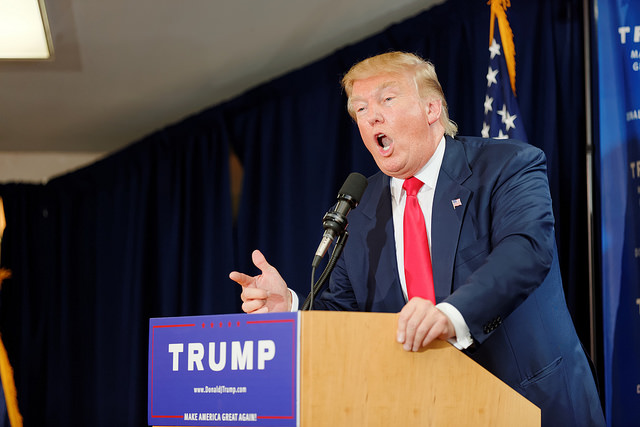
The rowdy disruption of Republican hopeful Donald Trump’s rally in Chicago Friday night was captured in images that showed boorish protesters and supporters lashing out at each other on live television — the outcome of a miasmic political atmosphere.
The Chicago rally is reminiscent of the violent confrontations that erupted during the Democratic National Convention of 1968 — another turbulent political year that, much like today, metastasized in a deeply polarized nation. Today’s presidential candidates consist of some of the most controversial individuals during a time in which we continue to find ourselves split on huge issues such as immigration and economic disparity, despite how far we’ve come since the political violence of the 1960s.
Many have laid the blame for Friday’s events on Trump, lambasting him for engendering what appears to be a campaign trail that condones the use of violence against disruptive protestors. The Donald, on the other hand, pointed to supporters of Bernie Sanders as the troublemakers and went as far as to call them “thugs.”
The fact is that everyone, including constituents, had a part to play in Friday’s incident. Irrefutable evidence shows that Trump’s incendiary rhetoric set a hostile tone for his rallies, which is not to say that everyone who goes to a Trump rally is itching to deck a protester in the face.
On the other side, Democratic supporters who find themselves disillusioned with today’s socio-economic climate have disrupted rallies within their own party, downgrading what should be a time of civil conversation to a political impasse. Democratic candidates, unsurprisingly, have gone on to blame their rivals in the Republican Party for fueling political divisiveness.
Friday night’s events just happened to put those heated elements together in the same area — a perfect storm. At a time when passions run high and when social media dominates how we consume information, the candidates can’t fool anyone. Countless videos of physical altercations initiated by Trump supporters exist online. Likewise, footage of abusive left-wing protestors screaming and disrupting rallies exist. These videos, including footage of Chicago’s rally, often go viral and paint what many perceive to be the overall picture. In reality, they simply depict what is only a mere iota of a larger issue — political stagnation. This political stagnation is not only among members of Congress and presidential candidates but is among constituents as well.
This is the culmination of decades of stagnation and polarization — a state devoid of any sort of civil discussion and in which there are no winners. If we continue this caustic trend of partisanship, there never will be any.
It’s safe to say that images of Chicago’s canceled rally have galvanized people across the country and there will likely be more copycat rally shutdowns to come. Now more than ever, both candidates and constituents need to relinquish some of their obstinacy to relieve tensions and encourage a culture of compromise.
Easier said than done? Of course. But it all starts with the individual who reads this column.
Israel Aragon is a freshman majoring in neuroscience.
Feature photo courtesy Flickr user Michael Vadon.






